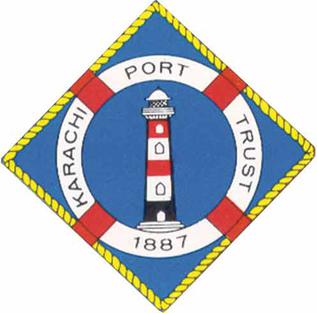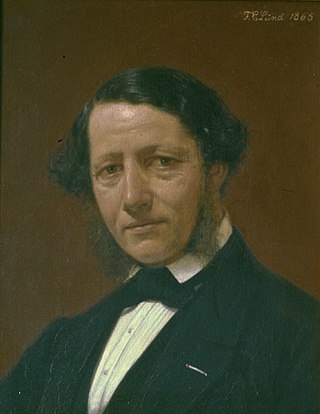
The Pakistan Navy (PN) is the uniform naval warfare branch of the Pakistan Armed Forces. The President of Pakistan is the Supreme Commander of the Navy. The Chief of the Naval Staff, a four-star admiral commands the navy. The Pakistan Navy operates on the coastline of Pakistan in the Arabian Sea and Gulf of Oman. It was established in August 1947, following the independence of Pakistan from the United Kingdom.

Operation Trident was an offensive operation launched by the Indian Navy on Pakistan's port city of Karachi during the Indo-Pakistani War of 1971. Operation Trident saw the first use of anti-ship missiles in combat in the region. The operation was conducted on the night of 4–5 December and inflicted heavy damage on Pakistani vessels and facilities. While India suffered no losses, Pakistan lost a minesweeper, a destroyer, a cargo vessel carrying ammunition, and fuel storage tanks in Karachi. Another destroyer was also badly damaged and eventually scrapped. India celebrates its Navy Day annually on 4 December to mark this operation. Trident was followed up by Operation Python three days later.

Blue Area is the central business district of Islamabad, Pakistan along the Jinnah Avenue. The area is a 2-kilometer (1.2 mi)-long corridor along Islamabad's Khayaban-e-Quaid-e-Azam, Islamabad's primary arterial road which leads up to the main government buildings. It is characterized by clean, wide roads and tall buildings among the panoramic greenery of the adjacent areas.

The Karachi Port Trust (KPT) (Urdu: ادارہِ تولیتِ بندرگاہ کراچی) is a Pakistani federal government agency under the administrative control of the Federal Maritime Secretary that oversees the operations of the Port of Karachi, one of South Asia's largest and busiest deep-water seaports which handles over 90% of the nation's foreign trade. The agency is headquartered at the colonial-era Karachi Port Trust Building.

Keamari is a neighbourhood in Karachi, Sindh, Pakistan. Keamari was originally an independent settlement that was built on a sandy ridge on the eastern side of Karachi Harbour.

The Port of Karachi is one of South Asia's largest and busiest deep-water seaports, handling about 60% of the nation's cargo located in Karachi, Pakistan. It is located on the Karachi Harbour, between Kiamari Azra Langri, Manora, and Kakapir, and close to Karachi's main business district and several industrial areas. The geographic position of the port places it in close proximity to major shipping routes such as the Strait of Hormuz. It is also ideally located to offer gateway services to the maritime trade for the Central Asian Republics (CARs). The administration of the port is carried out by the Karachi Port Trust, which was established in 1857.

The Karachi Shipyard & Engineering Works Limited is a major defence contractor and shipbuilding company situated in the West Wharf in Karachi, Sindh in Pakistan.
The city of Karachi is a major transport hub of Pakistan. The Karachi port and airport are major gateways to Pakistan. The Karachi Railway stations transports the major part of Pakistan's trade with other countries.

Rear Admiral Agha DanishHI(m), SI(M), is a retired two-star rank admiral and a senior naval aviator in the Pakistan Navy. Starting his career in the Operations Branch of the Navy as a General Duty Pilot, the Admiral's last appointment was the Naval Field Command where he was responsible for overseeing operational and war preparedness of all air, surface and sub-surface units of the Pakistan Naval Fleet.

The Pakistan Maritime Security Agency is a branch of the Pakistan Navy. It is a Navy-managed and Navy-controlled law enforcement agency whose mission is to provide protection to the Pakistan's maritime interests and enforcement of maritime law with jurisdiction over the domestic and international waters of Pakistan including the exclusive economic zone. Pakistan Maritime security agency should not be confused with Pakistan Coast Guards which is security force under Pakistan Army.

The Quaid-e-Azam House, also known as Flagstaff House, is a house museum dedicated to the personal life of Muhammad Ali Jinnah, the founder of Pakistan. Located in Karachi, Sindh, Pakistan, it was designed by British architect Moses Somake.
Antisemitism in Pakistan is the presence of hostility and discrimination against Jews in Pakistan based on prejudices against the Jewish people and/or the religion of Judaism. Alongside the prevalence of general stereotypes, Jews are commonly subjected to negative views, feelings and rhetoric in Pakistan, most of which overlap with and are directly related to the antisemitic views prevalent throughout the Islamic world. Widely regarded as miserly within Pakistani Muslim circles, Jews residing in Pakistan have also faced periodic intolerance by the state, which has intensified since the Islamization period of the 1980s under Muhammad Zia-ul-Haq, who propelled Pakistan towards the adoption of strict and highly-conservative Islamic practices and laws. The Jewish population of Pakistan has rapidly decreased since the state's founding and separation from neighbouring India in August 1947, and as of 2019 estimates, stands at less than 200 people amidst Pakistan's total population of over 200 million, the majority of whom are Muslims.
Karachi Goan Association is a social and sports club in Karachi, Sindh, Pakistan.

The Naval Headquarters is the direct reporting and the command post of the Pakistan Navy, currently stationed in Islamabad, Pakistan.

The Karachi Port Trust Building, also referred to as the KPT Building, is a large colonial-era building in Karachi, Pakistan that serves as headquarters for the Karachi Port Trust, which administers the Port of Karachi. The building dates from the height of the British Raj, and was inaugurated on 5 January 1916.

Moritz Gerson Melchior was a Jewish-Danish businessman. He headed the trading house Moses & Søn G. Melchior from 1845. He owned the property at Ploug House at Højbro Plads 21 in Copenhagen as well as the country house Rolighed. Moritz G. Melchior and his wife Dorothea Melchior were some of Hans Christian Andersen's closest friends in the later part of his life.
Moses Somake was a British architect known for designing several prominent buildings in British India. His works, built before the Partition of India and located in modern-day Pakistan, include the Edward House, BVS Parsi High School, Karachi Goan Association building, Khaliq Dina Hall, Mules Mansion and Quaid-e-Azam House.

Edward House is a building which is located in the Civil Lines area of Karachi, Pakistan It was designed by the Iraqi-Jewish architect Moses Somake in 1910, and named after Somake's son, Ellis Edward.

The TDF Ghar is an informal learning space situated in Karachi, Pakistan. It’s a house constructed in the 1930s and restored as a living museum. The Dawood Foundation (TDF) has retained the heritage architectural features of the house to preserve the living style of the past residents of cosmopolitan Karachi.

















